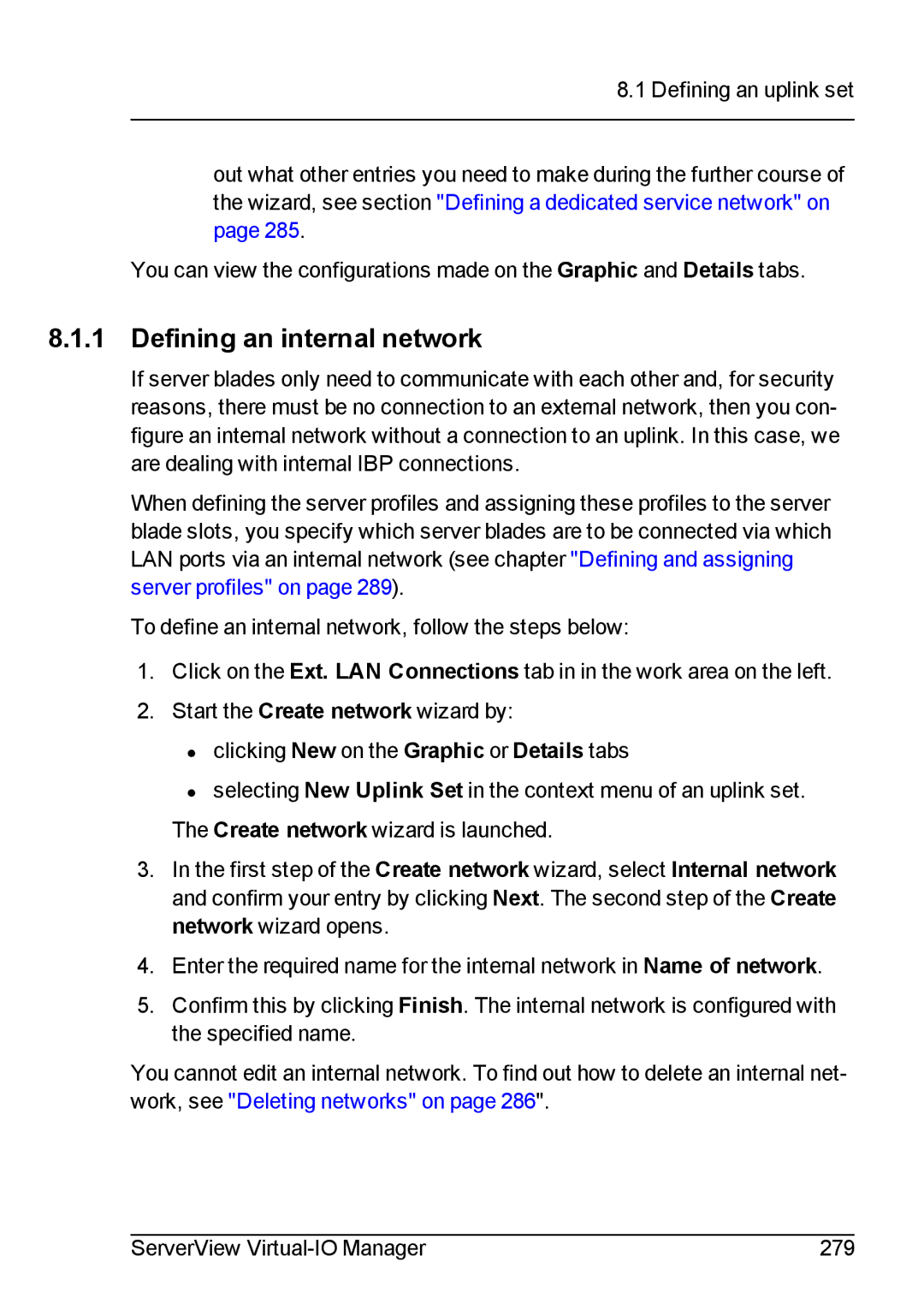
8.1 Defining an uplink set
out what other entries you need to make during the further course of the wizard, see section "Defining a dedicated service network" on page 285.
You can view the configurations made on the Graphic and Details tabs.
8.1.1 Defining an internal network
If server blades only need to communicate with each other and, for security reasons, there must be no connection to an external network, then you con- figure an internal network without a connection to an uplink. In this case, we are dealing with internal IBP connections.
When defining the server profiles and assigning these profiles to the server blade slots, you specify which server blades are to be connected via which LAN ports via an internal network (see chapter "Defining and assigning server profiles" on page 289).
To define an internal network, follow the steps below:
1.Click on the Ext. LAN Connections tab in in the work area on the left.
2.Start the Create network wizard by:
•clicking New on the Graphic or Details tabs
•selecting New Uplink Set in the context menu of an uplink set. The Create network wizard is launched.
3.In the first step of the Create network wizard, select Internal network and confirm your entry by clicking Next. The second step of the Create network wizard opens.
4.Enter the required name for the internal network in Name of network.
5.Confirm this by clicking Finish. The internal network is configured with the specified name.
You cannot edit an internal network. To find out how to delete an internal net- work, see "Deleting networks" on page 286".
ServerView | 279 |
